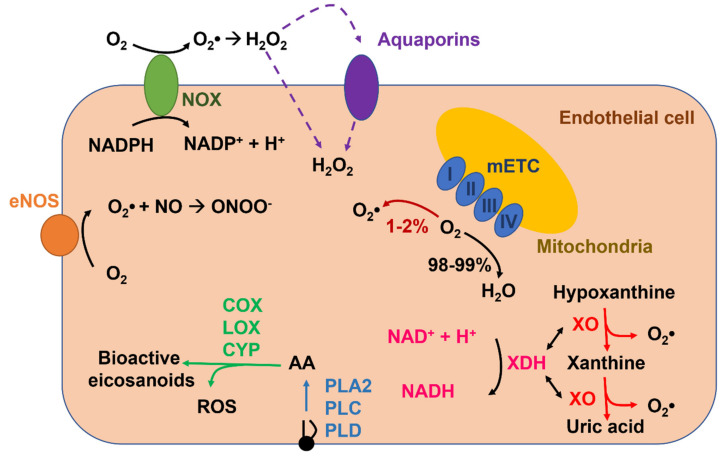Figure 1.
Major mechanisms of ROS production in vascular endothelial cells. The enzyme NADPH oxidase (NOX; green) catalyzes the transfer of an electron from NADPH to O2, generating O2•− in the extracellular space. O2•− is rapidly dismutated into H2O2, which may freely diffuse across the plasma membrane or enter the cytosol through aquaporins (purple). O2•− is continuously generated in the mitochondria (right) by members (blue) of the electron transport chain machinery (mETC; blue) in the inner mitochondrial membrane. 1%-2% of the O2 consumed is estimated to be converted into O2•− and not into H2O2. A fraction of this O2•− can then leak to the cytoplasm through the VDACs in the outer mitochondrial membrane. During the oxidation of hypoxanthine to xanthine and xanthine to uric acid, XDH catalyzes the reduction of NAD+ to NADH, whereas XO catalyzes the reduction of O2 to O2•− and not into H2O2. Arachidonic acid, which may be produced upon cleavage of glycerophospholipids on the plasma membrane by PLD, PLC, and PLA2, may generate ROS as secondary byproducts during its conversion into an array of bioactive eicosanoids by COXs, LOXs, and CYPs. Finally, eNOS (orange) releases NO in the presence of BH4 (coupled eNOS), while it produces O2•− in the absence of BH4 (uncoupled eNOS).

